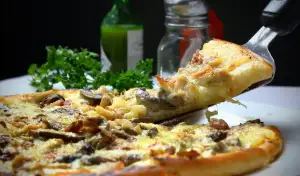Revive Your Rusty Cast Iron: Expert Tips on How to Clean and Restore Your Beloved Cookware

- Gather the Necessary Supplies for Cleaning
- Preparing the Cast Iron for Cleaning
- Method 1: Using Salt and Oil to Remove Rust
- Method 2: Utilizing Vinegar and Baking Soda for Rust Removal
- Method 3: Employing Electrolysis to Clean Rusty Cast Iron
- Cleaning the Cast Iron Surface
- Drying and Seasoning the Cast Iron
- Maintenance Tips to Prevent Rust in the Future
Cast iron cookware has long been cherished for its durability and ability to retain heat evenly. However, over time, these beloved kitchen staples can develop rust, compromising their performance and appearance. Cleaning rusty cast iron is not only essential for maintaining its longevity but also for ensuring the safety and taste of your culinary creations. In this article, we will explore expert tips on how to clean and restore your rusty cast iron, so you can continue to cook with passion and love.
Gather the Necessary Supplies for Cleaning
To effectively clean and restore your rusty cast iron, it is important to gather the necessary supplies beforehand. Here are the items you will need:
1. Coarse salt: This will act as an abrasive to help remove rust from the surface of the cast iron.
2. Cooking oil: Opt for a high smoke point oil like vegetable or canola oil. This will be used in combination with salt to create a paste for rust removal.
3. Vinegar: The acidity in vinegar helps dissolve rust and stubborn stains on cast iron.
4. Baking soda: This versatile ingredient will be used in combination with vinegar to create a bubbling reaction that aids in rust removal.
5. Scrub brush or sponge: Choose a brush or sponge specifically designed for cleaning cast iron, preferably one with stiff bristles or abrasive pads.
6. Plastic scraper or spatula: Use this tool to gently scrape off any large particles or food residue stuck on the surface of the cast iron.
7. Paper towels or cloth towels: These will be used for drying the cast iron after cleaning.
8. Oven mitts: Protect your hands from heat when handling hot cast iron during cleaning and seasoning.
By having these supplies ready, you'll be well-prepared to tackle the task of cleaning and restoring your beloved cast iron cookware.
Preparing the Cast Iron for Cleaning
Before you begin the process of cleaning your rusty cast iron, it is important to properly prepare the cookware. Start by removing any food residue or stuck-on debris from the surface. You can use a plastic scraper or a stiff brush to gently scrape away any stubborn bits.
Next, rinse the cast iron under warm water to remove any loose particles. Avoid using soap at this stage, as it can strip away the seasoning on the cookware. Instead, focus on using water and scrubbing to loosen and remove dirt.
Once rinsed, dry the cast iron thoroughly with a clean towel. It is crucial to ensure that there is no moisture left on the surface, as this can lead to further rusting.
Now that your cast iron is prepared for cleaning, you can move on to choosing one of the effective methods outlined in this article to restore your beloved cookware back to its former glory.
Method 1: Using Salt and Oil to Remove Rust
One of the most effective methods for removing rust from your beloved cast iron cookware is by using a combination of salt and oil. This simple yet powerful technique can help restore your rusty pan to its former glory.
To begin, you will need coarse salt and a high-quality cooking oil. Start by sprinkling a generous amount of salt onto the surface of the rusty cast iron. The salt acts as an abrasive, helping to scrub away the rust.
Next, take a paper towel or a clean cloth and pour a small amount of oil onto it. Rub the oiled cloth over the surface of the pan, focusing on the areas with rust. The oil helps to loosen and dissolve the rust, making it easier to remove.
Using gentle circular motions, continue to rub the salt and oil mixture into the rusty areas. You may need to apply more pressure for stubborn rust spots. Be patient and thorough in your approach.
After several minutes of scrubbing, rinse off the pan with warm water. Use a sponge or brush to remove any remaining salt residue. Dry the cast iron thoroughly with a clean towel.
Inspect your cast iron after cleaning it with this method. If there are still traces of rust remaining, repeat the process until all signs of rust have been eliminated.
Using salt and oil is a natural and chemical-free way to remove rust from your cast iron cookware. It is important to note that this method may not be suitable for severe cases of rust or heavily corroded pans.
By utilizing this technique regularly and maintaining proper care for your cast iron cookware, you can enjoy its durability and longevity for years to come.
Method 2: Utilizing Vinegar and Baking Soda for Rust Removal
Another effective method to remove rust from your beloved cast iron cookware is by using vinegar and baking soda. Here's how you can do it:
1. Fill a sink or basin with equal parts white vinegar and water. Make sure there is enough liquid to fully submerge the rusty area of the cast iron.
2. Place the rusty cast iron into the vinegar solution, ensuring that it is completely submerged. Let it soak for at least a few hours or overnight.
3. After soaking, remove the cast iron from the vinegar solution and scrub off any remaining rust using a sponge or brush.
4. Rinse the cast iron thoroughly with water to remove any traces of vinegar.
5. Next, create a paste by mixing equal parts baking soda and water. Apply this paste onto the rusty areas of the cast iron and let it sit for about 15-20 minutes.
6. Scrub the paste gently using a sponge or brush until all rust has been removed.
7. Rinse the cast iron once again with water to get rid of any residue from the baking soda mixture.
By utilizing this vinegar and baking soda method, you can effectively remove stubborn rust from your cast iron cookware, restoring its original shine and functionality.
Method 3: Employing Electrolysis to Clean Rusty Cast Iron
Electrolysis is a powerful method for removing rust from cast iron. It involves using an electrical current to break down the rust and restore the cookware to its former glory. To employ this technique, you will need a plastic container large enough to submerge your cast iron in, a battery charger or power supply, a sacrificial piece of metal such as rebar or steel wire, and washing soda.
First, fill the plastic container with water and add about one tablespoon of washing soda per gallon of water. Stir until the washing soda dissolves completely. Place your rusty cast iron into the solution, ensuring that it is fully submerged.
Next, connect the positive terminal of your battery charger or power supply to the sacrificial piece of metal and place it into the container, making sure it does not touch the cast iron. Connect the negative terminal to the cast iron itself.
Turn on the power supply and let electrolysis work its magic. The electrical current will cause a chemical reaction that breaks down the rust from your cast iron and transfers it onto the sacrificial piece of metal.
Leave your cast iron in this electrolysis bath for several hours or overnight, depending on how severe the rust is. Periodically check on it to ensure everything is running smoothly.
Once you are satisfied with the results, remove your cast iron from the solution and scrub off any remaining rust using a brush or sponge. Rinse thoroughly with water to remove any residue from the electrolysis process.
Remember to dry your cast iron completely before moving on to seasoning it again. Electrolysis can leave behind small amounts of surface oxidation, so be sure to follow up with proper seasoning techniques to protect your cookware from future rusting.
By employing electrolysis, you can effectively clean even heavily rusted cast iron and bring it back to life. This method is particularly useful for vintage or heirloom pieces that require a more intensive restoration process.
Cleaning the Cast Iron Surface
Once you have successfully removed the rust from your cast iron, it's time to focus on cleaning the surface. Start by rinsing the cookware with warm water to remove any loose debris or residue. Avoid using soap as it can strip away the seasoning.
Next, use a stiff brush or sponge to scrub away any remaining dirt or grime. Pay extra attention to any stubborn spots or stains. If needed, you can add a small amount of coarse salt as an abrasive agent to help lift off tough residues.
After scrubbing, rinse the cast iron thoroughly with warm water again to ensure all debris is removed. Make sure there are no traces of salt left behind.
To further sanitize the cookware, you can heat it on low heat for a few minutes on the stovetop or in the oven. This will help kill any bacteria and dry out the cast iron completely.
Remember, never leave your cast iron wet or damp as it can lead to rust formation. Always make sure it is completely dry before moving on to the next step.
Now that your cast iron is clean and dry, it's time to move on to seasoning and protecting its surface for future use.
Drying and Seasoning the Cast Iron
Once you have thoroughly cleaned your cast iron and removed all traces of rust, it is crucial to dry it completely. Any moisture left on the surface can lead to new rust formation. To dry your cast iron, simply place it on a stovetop burner set to low heat for a few minutes. This will evaporate any remaining moisture.
After drying, it's time to season your cast iron. Seasoning creates a protective layer that prevents rust and enhances the non-stick properties of the cookware. Begin by applying a thin layer of vegetable oil or melted shortening to the entire surface, inside and out.
Next, preheat your oven to 350°F (175°C). Place the oiled cast iron upside down on the oven rack, with a baking sheet or aluminum foil underneath to catch any drips. Bake for one hour, allowing the oil to polymerize and form a durable seasoning layer.
Once the hour is up, turn off the oven but leave the cast iron inside until it cools down completely. This slow cooling process helps in further strengthening the seasoning layer.
Remember that seasoning is an ongoing process. The more you use your cast iron for cooking, the better seasoned it becomes. Each time you cook with it, a small amount of oil gets absorbed into the pores of the metal, enhancing its non-stick properties.
By properly drying and seasoning your cast iron cookware, you are ensuring its longevity and preventing future rust formation. With regular maintenance and care, your beloved cast iron will continue to serve you well for years to come.
Maintenance Tips to Prevent Rust in the Future
To prevent rust from forming on your beloved cast iron cookware in the future, it is essential to follow a few maintenance tips. Firstly, always make sure to thoroughly dry your cast iron after cleaning. Use a clean cloth or paper towel to remove any moisture before storing it. Secondly, avoid leaving food or liquids in the cast iron for extended periods as this can lead to rust formation. Instead, transfer leftovers to separate containers and clean the cookware promptly. Additionally, it is crucial to season your cast iron regularly. Apply a thin layer of oil and heat it on low heat for a few minutes to maintain its protective coating. Lastly, store your cast iron in a dry place away from moisture and humidity. By following these simple maintenance tips, you can enjoy a rust-free cast iron for years to come.
In conclusion, by following these expert tips on how to clean and restore your beloved cast iron cookware, you can enjoy a rust-free surface for years to come. Remember the importance of regular maintenance and proper seasoning to prevent rust from forming. With the right supplies and cleaning methods, such as using salt and oil, vinegar and baking soda, or electrolysis, you can effectively remove rust and restore your cast iron's natural beauty. Take care of your cast iron, and it will reward you with delicious meals cooked with love.
Published: 30. 01. 2024
Category: Home



